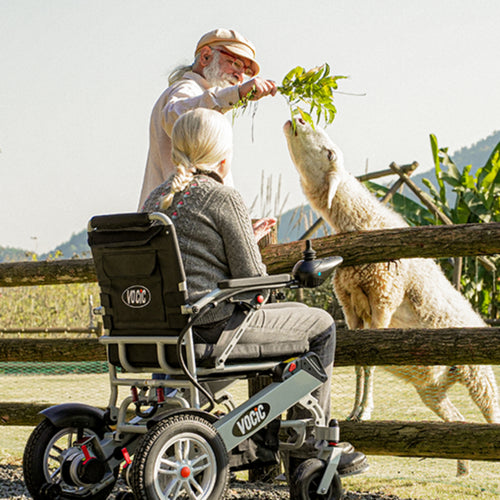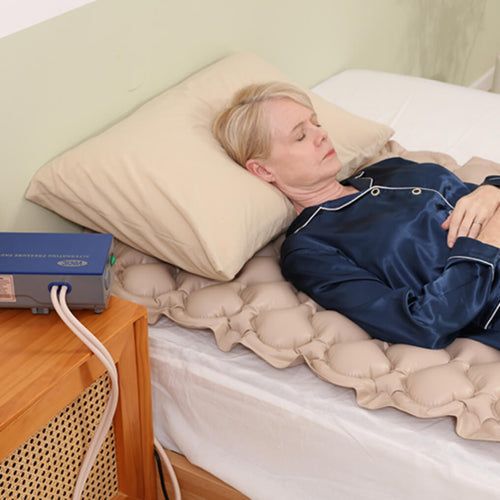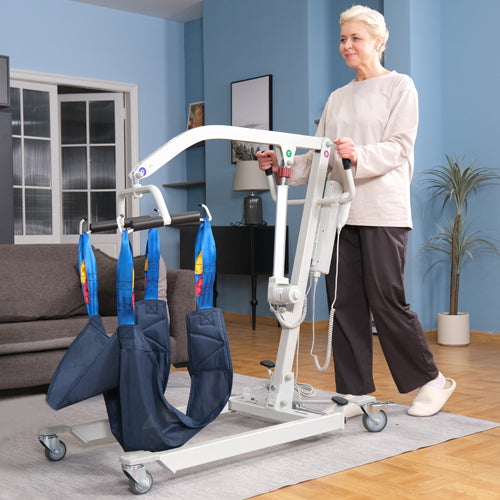With over 6.8 million Americans using devices like rollator walker to assist with mobility (The University of California - Disability Statistics Center, 2022), acknowledging the importance of these supportive aids is pivotal. It's reported that the proper use of walkers by elderly individuals alone can reduce the risk of fall-related injuries by up to 20%, demonstrating how valuable mastering their use can be.
This article delves into the essential techniques on how to use a walker for the elderly or those recovering from injuries. By understanding and applying the correct methods, users can enhance their mobility and sustain their quality of life, one step at a time. So, let’s get started with the basics.
What Is A Walker Used For?
A walker is a mobility aid designed for individuals who require additional support to maintain balance and stability while walking. It caters to a range of needs, from those recovering from surgery or injury to people with chronic conditions that affect their ability to move independently. Following are some of its primary uses:
Support and Stability: They offer a sturdy frame that reduces fall risk by distributing body weight more evenly—ideal for those with balance issues.
Injury Recovery: Post-injury or post-surgery, walkers facilitate rehabilitation, aiding walking exercises and ensuring proper healing and recovery.
Chronic Condition Assistance: Walkers effectively assist people with chronic conditions like arthritis or Parkinson’s disease, enhancing independence and quality of life.
Energy Conservation: They provide support and preserve energy, especially for those with respiratory or cardiac conditions that restrict endurance.
Increased Independence: Walkers increase self-reliance, enabling users to perform daily activities more independently—both indoors and outdoors.
How To Use A Walker Correctly?

Using a walker correctly can significantly improve your mobility, safety, and independence, whether you're recovering from surgery, dealing with chronic conditions, or encountering balance issues.
Walkers are primarily available in two configurations:
Those without wheels (standard walkers) and those with wheels on the front wheels. Each type serves different mobility needs and preferences. It is important to know which leg goes first when using a walker.
Generally, the stronger or unaffected leg should be the first to step forward, followed by the weaker or affected leg. This ensures better stability and support while walking with the assistance of a walker.
How to Use a Standard Walker?

Standard walkers provide necessary support for about 2% of adults over 65 and help reduce the risk of falls by 20%. They require lift with every step, offering a high level of stability for those recovering from injury or dealing with mobility issues.
As users navigate their recovery or daily activities, some might also consider alternatives like mobility scooters for different scenarios. Here's how to use a standard walker correctly, ensuring safety and efficiency in every step.
First, adjust the walker's height. The grips should align with the wrist creases when your arms hang down. This ensures a slight bend at the elbows when you hold the grips.
Grasp the walker's grips with both hands. Keep a comfortable, firm grip for stability.
Gently lift the walker and place it a short distance in front of you, ensuring all four legs land firmly and evenly on the ground.
To step forward, move your weaker or injured leg into the middle area of the walker first, followed by the stronger leg. Ensure your balance is maintained, and don’t step too far forward. Continue this process of lifting, moving, and stepping as you move forward.
How to Use a Walker with Front Wheels?

Unlike standard walkers that require lifting for movement, those with front wheels glide smoothly, reducing effort and enhancing stability. Here are the steps on how to use a walker with front wheels correctly to avoid falling.
Ensure the walker’s height is such that the grips align with your wrist creases when your arms are at your sides, promoting a slight elbow bend.
Both hands should hold the grips securely, ready to control the walker as you move. Gently push the walker forward instead of lifting it, making sure the wheels roll smoothly, and the back legs remain stable.
Begin with your weaker or injured leg, stepping forward into the center area of the walker, followed by the stronger leg. Ensure proper balance and avoid stepping too far into the walker. Keep pushing the walker ahead and stepping in sequence, maintaining a stable and balanced gait.
Tips To Ensure Safe And Smooth Use
- Keep your walker close to ensure balance and safety.
- Do not slide your walker while moving when using a standard walker.
- Keep your eyes straight ahead to maintain posture and prevent neck strain.
- Start the movement with your weaker leg for better stability.
- Turn gradually by pushing your walker towards the direction and then stepping in the same way.
- Use your arms, not your back, when lifting and moving your walker.
How To Stand Up Using A Walker?
Let's go through the steps of how to stand up using a walker:
- Begin by sitting on a sturdy and stable chair with your feet flat on the ground.
- Make sure that the walker is positioned close to you and that all four legs or wheels are firmly on the ground.
- Place your hands on the armrests of the chair or on the seat beside you to provide support and stability.
- Lean forward slightly and engage your core muscles to prepare for the standing movement.
- Slowly push up from the chair, using both your arms and legs to lift yourself up.
- As you rise, maintain contact with the chair using your hands and gradually transfer your weight onto your feet.
- Once you are in a standing position, reach out and grip the handles of the walker firmly with both hands.
- Make sure that the walker is stable before taking your first step.
Remember to maintain proper posture when using a walker, keep your weight evenly distributed, and take your time to ensure stability and reduce the risk of falls. If you feel uncertain or unsteady, it is always best to seek assistance from a healthcare professional or physical therapist to ensure proper technique and safety.
How To Sit Down With A Walker?

To sit down with a walker, follow these steps:
Position the walker in front of a stable chair that has armrests, ensuring the brakes are locked.
Stand close to the chair, facing away from it, with the back of your legs touching the seat.
Hold onto the walker's handles securely with both hands.
Take a small shuffle and step backwards with one foot, keeping the other foot slightly in front for balance.
Gently lower yourself onto the chair, using the armrests for support as you sit down.
Ensure you are in a comfortable position before releasing your grip on the walker.
How To Use A Walker On Stairs?
To use a walker on stairs, follow these steps:
- Approach the stairs and ensure there is a railing available for additional support.
- Stand close to the first step, facing the stairs with the walker in front of you.
- Hold onto the walker handles securely with both hands.
- If the walker has a seat, ensure it is folded up before attempting to climb the stairs.
- Step up with your stronger leg first, placing it securely on the first step.
- Gradually shift your weight onto the leg on the first step while lifting the walker and bringing it to the same step.
- Use the railing for support as you continue to climb, taking one step at a time.
- Ensure the walker remains stable on each step before proceeding to the next one.
- When descending the stairs, reverse the process by stepping down with your weaker leg first while holding onto the walker and railing for support.
- Take your time and focus on maintaining balance and stability throughout the ascent or descent.
Here are some guidelines for using a walker in specific situations:
1. Leaning Through Small SpacesApproach the small space cautiously and assess if it is safe to navigate. If the walker is too wide to fit through the space, consider folding it or using a narrower alternative if available.
Position yourself close to the opening, ensuring the walker is in front of you for support. Lean your body slightly forward or to the side to create space for the walker to pass through.
Keep a firm grip on the walker handles and proceed slowly, making sure not to lose balance or stability.
Approach the area where you need to turn, ensuring there is enough space for maneuvering. Slow down and come to a complete stop before attempting to turn.
To turn left, shift your weight slightly onto the right foot while grasping the walker's handles securely. Pivot on the right foot, turning your body to the left.
Gradually follow the turn with the walker, keeping a steady and controlled movement. To turn right, follow the same steps, but shift your weight onto the left foot and pivot on the left foot instead. Take your time and proceed cautiously, maintaining stability and balance throughout the turn.
Conclusion
This comprehensive guide provides valuable insight into the proper use of mobility aids. But the main thing is to follow the healthcare provider's specific instructions on how to use a walker and any weight-bearing instructions. Make sure someone is present to care for you while walking up and down the stairs or don't try it.
Whether you are an older adult, someone recovering from an injury, or someone with balance issues, being able to master the skills of using mobility aids such as walkers, scooters, etc. is critical to maintaining a high quality of life. Explore mobility aids at VOCIC for more
If you are looking for more mobility solutions, you can check out our article on different types of walkers for seniors.









